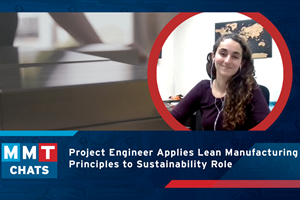Are You Ready for ISO Certification?
ISO certification just may give you the competitive edge that you need to survive in this economy.
Marketing is knowing what your customers want. Sales is making sure they get it. The trend toward systems integration has helped drive out cost and improve performance, but the key to long-term growth for the plastics industry revolves around enhancing overall value-chain relationships (see Figure 1).
Suppliers need to be treated as partners to allow the industry to create a competitive advantage and higher value for consumers. Tooling and moldmaking is where the task starts to determine total cost of acquisition/ownership to the OEM/end user. Next in line is manufacturability and choice of resin/compound and just-in-time delivery. The product shipped must be 100 percent defect free or part of a Six Sigma (3.4 defects per million) program.
U.S. toolmakers and moldmakers, along with advocates who maintain a focus on developing "Made in the U.S.," are developing alliances to help locally-owned businesses. It is important to encourage OEMs and end users to support locally owned businesses by developing strategies that will help community-based firms survive the competition from large conglomerates. This is necessary due to the gradual closing of a large number of community-based businesses. They are being replaced by businesses with absentee owners. It is important to strengthen the bond between OEMs/end users and moldmakers and molders.
ISO Certification: Are You Ready?
Your largest customer has requested that you become certified. Do you know how to get started? Many firms hire a consultant to help them prepare. Choose one that will give you a guarantee that you will get certified in a mutually agreed upon time frame for the original contract cost.
This consultant should conduct the first internal assessment, ensuring that it does happen, and that everyone who needs to be a part of the process can watch, listen and learn. Share the vision and the benefits of pursuing ISO 9001:2000. Keep people informed of the progress and celebrate small victories along the way. It is a mutual goal for the company to continually improve the effectiveness of the quality management system.
Sometimes in the middle of a large project like obtaining ISO 9001 certification we ask ourselves if it is worth it. If that is where you are at in the process or if you still have doubts about the value of certification, it is worth recalling some of the benefits.
A Competitive Edge
The main benefit is the worldwide recognition that comes with certification. This separates your company from others who have not become quality certified. Along with this recognition comes a great potential for winning more business.
Better Communication
The first thing that companies notice from achieving certification is an improvement in their communication, both externally and internally. Other benefits include advantages over the competition and organizational improvements.
Financial Savings
Streamlining processes - either quality management systems or environmental management systems - makes your shop more competitive. You need transaction capability, but the real wins are in collaboration. Suppliers participating in dynamic bidding events have trimmed prices by double-digit percentages.
Total Cost of Acquisition/Ownership to OEMs/End Users.
Moldmaking management experience provides leadership to accomplish the following:
- Manage daily operations.
- Maximize production efficiency and profit.
- Direct the shop/plant safety program.
- Implement cost reduction methods.
- Accept financial responsibility for controlling costs.
- Work with employees to manage their strengths and assets.
- Establish a sound quality program.
- Promote continuous improvements.
Senior management and owners are ultimately responsible for the performance of all areas within their businesses, including finance, marketing, e-commerce and more. The purpose of ISO 9001:2000 is to keep CEOs, presidents and owners up-to-date on a wide variety of areas within their companies, providing macro-overviews of the latest trends and breakthroughs within the various areas they oversee, while providing the micro-analysis needed.
Related Content
Shift in U.S. Mold Imports: Emerging Countries Gain Ground in Market Share
The dynamic nature of the U.S. mold industry's global trade landscape offers challenges and opportunities for growth.
Read MoreTreatment and Disposal of Used Metalworking Fluids
With greater emphasis on fluid longevity and fluid recycling, it is important to remember that water-based metalworking fluids are “consumable” and have a finite life.
Read MoreDynamic Tool Corp: Leadtime Leader Insights and Bold Plans for the Future | MMT Chats
MoldMaking Technology Editorial Director Christina Fuges gets the scoop from our 2024 Leadtime Leader Award Winner Dynamic Tool Corp., on the company's future, their trade show experience, finding new talent and the impact of this industry recognition.
Read MoreMMT Chats: Project Engineer Applies Lean Manufacturing Principles to Growing Sustainability Role
MoldMaking Technology Editorial Director Christina Fuges catches up with MMT’s 30-Under-30 Honoree Katherine Pistorius, who has added Regional Sustainability Coordinator alongside her Project Engineer duties, which demonstrates the many paths one can take in a manufacturing career. Here she shares how this opportunity unfolded for her and what the job entails today and in the future. This episode is brought to you by ISCAR with New Ideas for Machining Intelligently.
Read MoreRead Next
Reasons to Use Fiber Lasers for Mold Cleaning
Fiber lasers offer a simplicity, speed, control and portability, minimizing mold cleaning risks.
Read MoreHow to Use Strategic Planning Tools, Data to Manage the Human Side of Business
Q&A with Marion Wells, MMT EAB member and founder of Human Asset Management.
Read MoreHow to Use Continuing Education to Remain Competitive in Moldmaking
Continued training helps moldmakers make tooling decisions and properly use the latest cutting tool to efficiently machine high-quality molds.
Read More



















